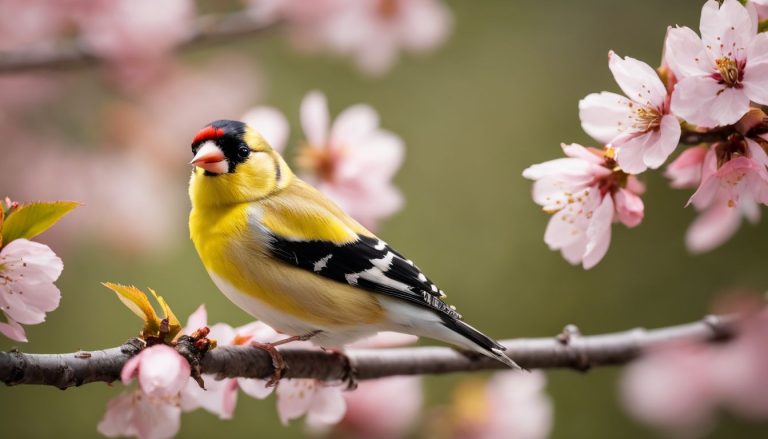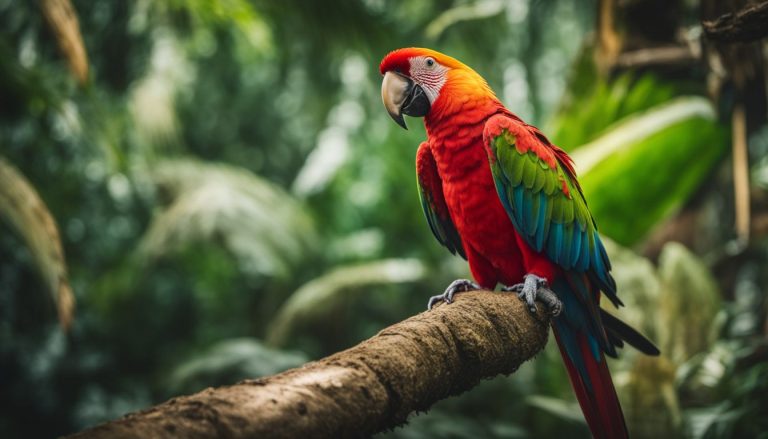As the sun takes its last bow and twilight embraces the sky, there’s a tranquil curiosity that surrounds our avian companions: where do they retreat for their nightly respite? Drawing from years of observation as an enthusiastic birdwatcher, I’m thrilled to share some endearing snapshots into their evening customs.
Birds, with their innate knack for adaptation, gracefully transition from bustling daylight activities to serene nocturnal repose.
Their sleep-time strategies are as diverse as the vibrant spectrum of species – some find solace within the gentle sways of tree branches while others select snug niches shaped by time’s hand and nature\’s delicate craftsmanship.
Each bird approaches its choice of roost with thoughtful consideration—prioritizing protection from nocturnal hunters and shelter against inclement weather. These discerning selections demonstrate a level of environmental acumen that often goes unnoticed by us humans.
So cozy up and get ready to peel back layers of mystery as we explore how these feathered marvels elevate resting into an art form crafted for survival—a testament not just to instinct but also intelligence.
Join me in reveling in this quiet ballet performed each evening in skies around us!
Key Takeaways
- Birds sleep in many places like nests, trees, caves, and even while flying or standing.
- They have special ways to stay safe at night, like choosing hidden spots or sleeping together in groups.
- Some birds are active at night. They might sing, fly long distances, look for food, or hang out with other birds.
- Birds can lock their legs on a perch so they don’t fall off while sleeping. They also tuck one leg up to keep warm.
- It’s likely that birds dream because their brains show patterns like dreaming animals when asleep.
Understanding Bird Sleep Patterns
Birds have different sleep patterns depending on whether they are diurnal or nocturnal. Understanding these patterns can give valuable insight into where and how birds sleep at night.
Diurnal vs. Nocturnal Birds
As a birder, I find the sleeping patterns of our feathered friends quite fascinating. To better understand where birds sleep, let’s delve into the difference between diurnal and nocturnal birds.
| Diurnal Birds | Nocturnal Birds |
|---|---|
| Active during daylight hours | Active at night |
| Typically roost at dusk | Start their activities at dusk |
| Includes species like sparrows and robins | Includes species like owls and nightjars |
| Often sleep in nests, on branches, or other secure spots | May sleep in caves, dense trees, or secluded areas |
| Leave their roosts at dawn | Find their sleeping spots at dawn |
These sleep patterns have a significant impact on where birds choose to rest. Diurnal species usually return to their roosts around dusk and leave at dawn, while nocturnal birds do the opposite. Each group has adapted to maximize safety and efficiency in their respective active periods. Understanding this helps me appreciate the diversity of avian life and their incredible adaptations to the environment.
Where Do Birds Sleep at Night?
Birds sleep in a variety of locations, including nests, tree branches, and even caves. To learn more about where birds rest at night, keep reading!
Nests, Tree Branches, Caves, and Other Options
At night, birds sleep in various places to stay safe from predators and keep warm. Here are the options they use:
- Nests: Birds often sleep in nests during nesting seasons, providing warmth and protection for their eggs or young ones.
- Tree Branches: Many birds prefer sleeping on sturdy tree branches, where they can perch securely and remain hidden from predators.
- Caves: Some birds, like woodpeckers and nuthatches, choose to sleep in tree cavities or other sheltered areas to stay warm and protected.
- Flat Surfaces: Pigeons opt to sleep on flat, hard surfaces such as building ledges.
- Various Perching Spots: Birds can also sleep on round perches, standing on the ground, roosting, swimming, hanging upside down like parrots or even while flying.
- Hiding Places: Some birds seek shelter among vegetation or in shrubs to spend the night safely away from potential threats.
- Different Environments: Birds may also rest in diverse environments like shorelines, water bodies and even on the ground without using traditional nesting spots every time.
- Eyes Open: It’s worth noting that some birds may sleep with their eyes open for added vigilance against predators.
- Adaptability: Birds exhibit impressive adaptability by choosing different sleeping locations based on factors such as weather conditions and predator presence.
- Nocturnal Behavior: For nocturnal birds such as owls, they tend to find quieter and more concealed spots during the day for their daytime rest.
Bird Sleep Habits
Birds have unique sleep habits, with many species tucking their heads under their wings for a quick nap. They also use one leg to conserve body heat while perching on branches.
How Birds Sleep and Stay Warm
Birds sleep in various ways and positions. Some birds sleep while standing on one leg, some on a round perch or tree branch, and others even float on water to rest. They are impressive at adapting to different environments for their sleep needs.
For warmth and safety, woodpeckers and nuthatches find shelter in tree cavities during cold nights. Birds like pigeons choose flat, hard surfaces, usually building ledges as their sleeping spots.
Different species show amazing diversity in how they stay warm during the night.
The Importance of Perching
Perching is crucial for birds when it comes to sleeping. Birds have special tendons in their legs that automatically lock into place when they sit on a perch, allowing them to sleep without falling off.
This helps them feel secure and safe from predators while sleeping. In colder climates, birds also fluff up their feathers and tuck one leg into their body while perching to conserve heat.
Different types of birds have various preferences for the type of perch they choose, which showcases their adaptability and resourcefulness in finding suitable places to rest.
Do Birds Dream?
Birds probably dream, just like humans do. Scientists have studied the brain activity of sleeping birds and found patterns similar to those seen in dreaming mammals. This suggests that birds may experience some form of dreaming during their sleep.
For example, when a zebra finch is learning a song, brain activity related to singing can be observed not only during waking hours but also during sleep.
Some researchers believe that dreaming could help birds consolidate memories and improve their learning abilities. It’s fascinating to think about what birds might dream about and how it might benefit them in their daily lives.
Nighttime Behaviors of Birds
Birds often engage in singing, flying, and social activities during the night, as well as finding safe spots to sleep. To learn more about these fascinating nighttime behaviors of birds, keep reading!
Singing, Flying, and Other Activities
When birds are not sleeping, they engage in various activities. Here are some of the behaviors and activities that birds exhibit at night:
- Singing: Many birds sing at night, particularly during the breeding season. Nocturnal singing is common among songbirds and serves to defend territories and attract mates.
- Flying: Some birds migrate at night to avoid predators and take advantage of favorable weather conditions. They navigate using the stars or other natural cues.
- Foraging: Nocturnal birds such as owls and nightjars hunt for food under the cover of darkness when their prey is active.
- Socializing: In some species, nighttime serves as a time for social interactions, bonding, or communicating with other members of the flock.
- Resting: While not actively engaged in other activities, some birds may simply rest on their roosting spots while remaining alert for any potential threats.
How Birds Protect Themselves while Sleeping
Birds protect themselves while sleeping in various ways to ensure their safety. Here are some impressive ways birds safeguard themselves during sleep:
- Find Safe Roosting Spots: Birds choose secure locations to roost, such as dense foliage or hidden nooks, to minimize the risk of being found by predators.
- Group Sleeping: Some bird species opt for group sleeping, where they huddle together for warmth and protection, increasing their chances of detecting and warding off predators.
- Altered Sleep Patterns: Birds often adjust their sleep patterns, taking short naps instead of prolonged periods of sleep to remain alert to potential dangers.
- Camouflaging: Many birds rely on camouflage by choosing roosting spots that blend with their plumage or surroundings, making it harder for predators to spot them.
- Vocal Alarms: Some bird species have specific calls or signals used during sleep that alert others in the flock if a threat is detected, prompting a collective response for defense.
- Evasive Roosting Spots: Birds may select roosting spots that are harder for predators to access or approach, such as high perches or locations with limited entry points.
- Rapid Response Mechanisms: Birds possess swift response mechanisms that enable them to quickly wake up and escape if threatened while sleeping.
Conclusion
In conclusion, birds’ sleep habits vary depending on their species. They sleep in nests, tree branches, and even caves. Some can sleep while standing or flying. Understanding these behaviors is crucial for birders to observe them during nighttime activities in the wild.
I’m Owen Featherstone, your bird-watching buddy and enthusiast of all things feathered! Armed with binoculars and a notebook, I’m on a never-ending quest to uncover the mysteries of our avian friends. Whether it’s deciphering melodies in a dawn chorus or finding out if hummingbirds ever take coffee breaks, I’m here to share the delightful world of birds with you. So grab your virtual wings, and let’s explore the skies together!






